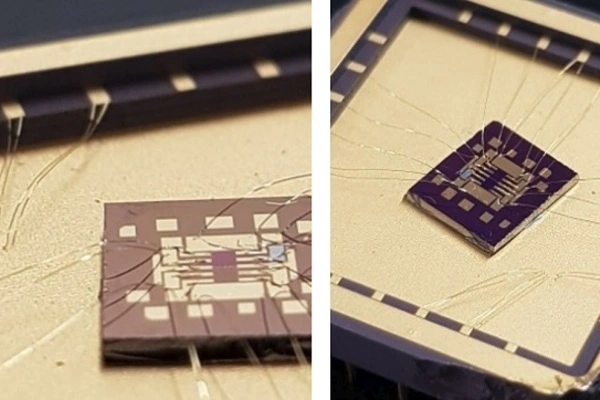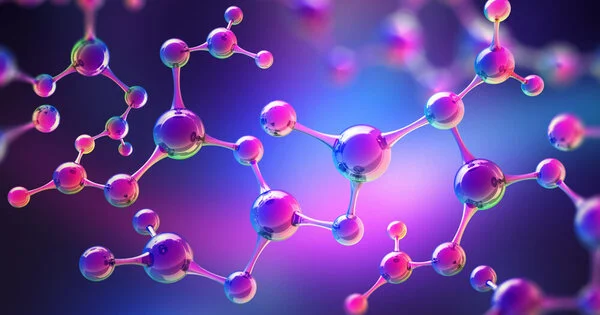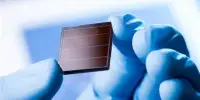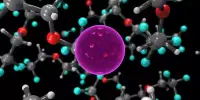A new study shows a novel, counterintuitive method of protecting atomically thin electronics: adding vibrations to reduce vibrations. Squeezing a liquid-metal gallium droplet coats graphene devices with a gallium-oxide protective coating that can cover millimeter-wide scales, potentially making it applicable for industrial large-scale fabrication. The new method improves device performance while also shielding 2D materials from thermal vibration in neighboring materials.
Researchers at Monash University have demonstrated a novel, counterintuitive method of protecting atomically thin electronics: adding vibrations to reduce vibrations. Graphene devices are coated with a glass, gallium-oxide protective coating by ‘squeezing’ a thin droplet of liquid gallium.
This oxide is remarkably thin, with less than 100 atoms covering centimeter-wide scales, making it potentially applicable for industrial large-scale fabrication. IBM’s current “2nm” transistors have gates with a similar thickness, close to 10nm (140 atoms).
“It’s quite novel to transfer such large-area nanosheets mechanically,” says lead author Matthew Gebert. “The oxide not only enhances and protects our devices when we first transfer them, but also later, during subsequent processing and fabrication,” says co-author Semonti Bhattacharyya.
It’s quite novel to transfer such large-area nanosheets mechanically. The oxide not only enhances and protects our devices when we first transfer them, but also later, during subsequent processing and fabrication.
Semonti Bhattacharyya
Gallium-improved oxide’s performance is due in part to the material’s high-K dielectric properties, which are an important component in the long march toward miniaturizing devices and reducing power waste.
Protective gallium-oxide also produces an unexpected result, lowering the electrical resistance in graphene caused by thermal vibrations caused by heat in the surrounding materials. “That’s surprising because, in effect, we’re adding extra vibrations to reduce total vibrations,” Matt explains. This is the first time a strategy to reduce resistance due to thermal vibrations in a graphene device has been demonstrated.
PROTECTION FROM A DAMAGING ENVIRONMENT
The Monash team from the ARC Centre of Excellence in Future Low-Energy Electronics Technologies (FLEET) created gallium-oxide (Ga2O3) glass using a novel liquid-metal printing technique. FLEET collaborators at RMIT developed this method, which has been used in a variety of electronics applications.
The glass film that forms on the surface of liquid gallium metal droplets is more than 5,000 times thinner than a human hair, but it can be reliably ‘printed’ from the liquid metal’s surface to form uniform continuous layers over centimetre-sized areas.
The liquid-metal method offers two advantages to protect devices. The layer-printing method prevents growth damage, while the transferred layer is a good barrier for further processing. Gallium-oxide encapsulation not only offers protection but can also enhance performance because of its High-K dielectric qualities. High-K dielectrics have not been easy to integrate with graphene, as the growth of these materials often involves the bombardment of highly energetic atoms.
As gallium-oxide encapsulation is a mechanical transfer technique (“think forklift stacking,” says Matthew Gebert), it is fundamentally different to alternative deposition methods (such as atomic layer deposition, evaporation, sputtering, and vapor deposition) which have undesirable attributes such as high-temperature requirements.
Because gallium metal is liquid near room temperature (30o C), this process has numerous advantages for industrial application. Gallium oxide can, in fact, be used as a buffer layer before proceeding with the other methods.
By testing their graphene devices with industrial growth tools, the Monash team demonstrated that gallium-oxide protected the graphene from surface damage. The addition of another oxide layer only harmed the uncovered areas of graphene, while the areas covered by gallium-oxide retained their properties.

DIELECTRIC LAYERS AND THEIR IMPORTANCE IN COMPUTING
Electrically insulating (dielectric) materials play a crucial role in the operation of transistors, the microscopic “switches” at the heart of electronics and computing. These dielectric materials enable a transistor to turn on and off without leaking power, allowing you to use your phone/PC.
Electrons accumulate across the dielectric material to create a voltage and influence the device to “switch” a transistor. Thinner dielectrics, on the other hand, leak current, reducing switchability and wasting current as heat. High-K dielectrics are important because they improve switch effectiveness, allowing for less current leakage and, as a result, less energy waste.
However, even high-K dielectrics devices are not impervious to size. As electronic materials get smaller and thinner as we relentlessly march towards cramming-in more transistors (to obey Moore’s Law), materials become strongly influenced by the surfaces of neighboring materials, often resulting in an drop of performance. This explains why graphene is often damaged by high-K dielectrics. One of these degrading phenomena that occur at surfaces is material vibrations.
VIBRATIONS AND GALLIUM-OXIDE’S ADVANTAGE
The vibrations of materials due to heat, which cause electrical resistance in materials, are called phonons. These vibrations (phonons) cause the atoms in a solid to oscillate, and flowing electrons bounce off these oscillations and change their direction, leading to electrical resistance.
The thermal vibrations of the carbon atoms in graphene produce remarkably little resistance, which is one of the reasons it is such a useful material for electronics. However, because graphene is so thin (only one atom thick), thermal vibrations in surrounding (remote) materials can have a large effect on electrons in graphene, which is the primary cause of electrical resistance in graphene at room temperature.
More phonons are excited as temperatures rise, increasing resistance by scattering electrons. “Think of this scenario as a fence,” says Matt Gebert, a Ph.D. student at Monash University/FLEET.
To investigate the gallium-protective oxide’s properties, the team mechanically transferred large areas onto graphene devices. Subsequent measurements confirmed that graphene’s electronic properties were preserved at various temperatures and electron populations, i.e. high electron mobility (a very useful property of a transistor).
“Adding the layer of Ga2O3 glass reduces the electrical resistance in graphene that is caused by phonon scattering,” Matt explains. (This is true in a target temperature range that is slightly below room temperature.) “This is counter-intuitive because adding this material introduces more phonons. You might think that the more phonons there are, the higher the resistance!”
These findings, however, are consistent with existing theories of phonons in insulators. Ga2O3 is a strong phonon host, but it can also change its atomic configuration to ‘screen’ the electric field from phonons in the silicon-dioxide glass on the other side of graphene.
Furthermore, the strong Ga2O3 phonons are modes that require a lot of energy to populate. As a result, Ga2O3 phonons become active only at higher temperatures (with more thermal energy), resulting in lower overall resistance in graphene until -53oC. (220 K). Gallium-oxide absorbs (only) positive vibrations.













